|
|
BEADS FROM BURMA
The range of styles and types of beads showcased on this
page is a testament to the mastery and advanced
techniques employed by Burmese bead artisans. Over the
past five years, browsing through various bead websites,
I've observed a peculiar trend: all beads from Burma
have been relabeled as 'Pyu/Tircul' beads. This is, in
fact, an oversimplification.
Without a doubt, the
Pyu/Tircul culture played a
significant role in bead making in Burma, yet bead
crafting also flourished in various other regions and
periods within Burma. Referring to all Burmese beads as Pyu/Tircul beads disregards the fact that a substantial
exchange of beads transpired between India and Burma,
driven by trade and shared Buddhist cultural ties.
It's plausible that this oversimplification has occurred
to make it easier to market and sell Burmese beads to a
burgeoning middle-class audience, primarily in the East,
who may not be as invested in the deeper, more complex
historical and cultural nuances.
PUMTEK DZI BEADS
Featured above is a bead discovered among many in a
ruin in rural Punjab, India, near the Pakistani border.
These beads, likely burial beads or at least never used,
display
slight discoloration from the surrounding earth. How
they ended up in this remote location far from Burma
remains a captivating bead-mystery.
In Memory of my Friend, Professor Bhandari
These unique beads were found by my dear friend,
Professor Bhandari, during his lifelong quest for
ancient coins throughout India. Now no longer with us,
Mr. Bhandari was an ardent collector of ancient coins.
His expeditions frequently led him to beads as well,
often retrieved by young boys living near archaeological
sites who earned some extra money from visiting
collectors like Professor Bhandari.
Professor Bhandari's coin hunting season invariably
commenced after the monsoon season, when the rain had
eroded the soil, facilitating fresh discoveries. It was
the Professor's modest collection of beads, which he
kindly gifted to me, that kindled my passion for bead
collecting. |
The beads in
my collection
are now for sale
Inquire
through bead ID
for price
|
|
|
These ball beads below were sourced from the Bagan area.
They are high-quality antique production beads from the early 20th
century. |
|
|
|
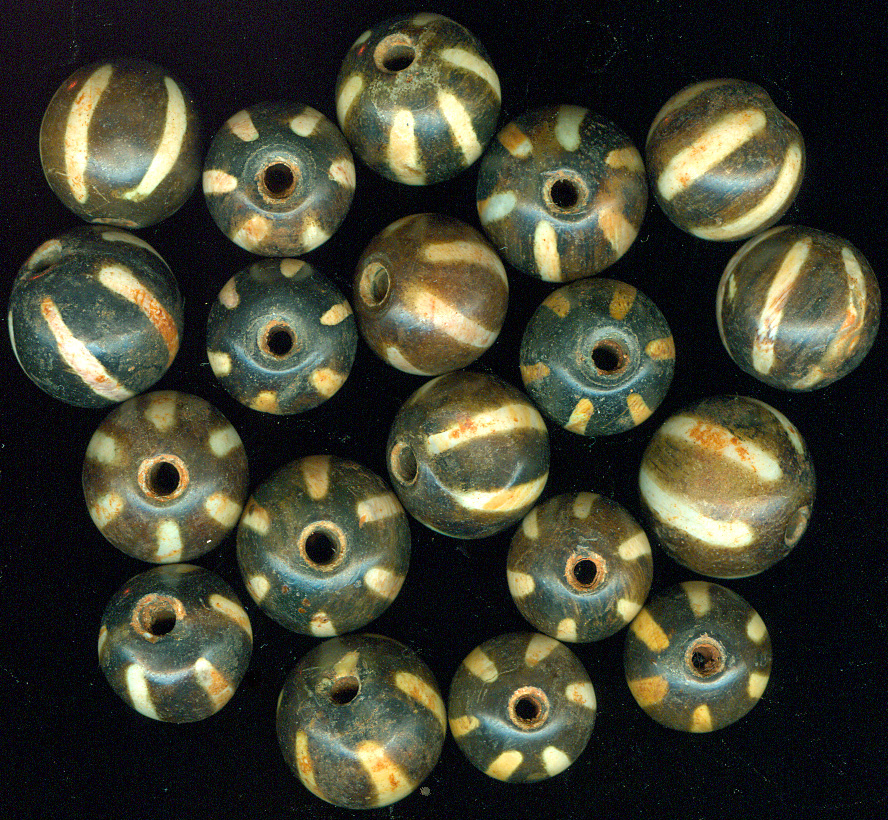
Brm
2
-
Largest ball bead: 15 mm
|
Pumtek
beads, also known as buried
thunderbolt beads, hold significant cultural
importance among the Chin people living in the Chin
Hills of western Burma/Myanmar and the adjacent area of
eastern India, where they are referred to as Kuki. The
original Pumtek beads were crafted over a millennium ago
by the Pyu, the founders of the earliest city-states in
Burma. Intriguingly, the art of Pumtek bead making
managed to survive in the mountainous regions, far
removed from the fertile rice plains of Bagan during its
zenith.
Ancient Pumtek beads are often quite small, typically
crafted from the opalized wood of the Borassus
flabellifer palm. These specific types of beads will
fluoresce when exposed to a short-wave UV lamp.
However, not all Pumtek beads are made from opalized
palm wood. Many are created from different types of
petrified wood, often in the form of chalcedony, and
despite this variation, they can still be quite ancient.
Petrified wood, derived from a wide variety of trees,
can be found all over Burma. It's only natural that
ancient bead makers, as well as their contemporary
counterparts, have opted for this striking material. As
demonstrated in the above photo, the original form and
structure of the wood are preserved in the form of a
woody grain.
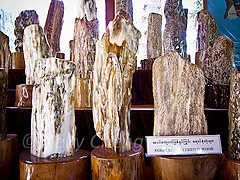
There are a lot of different varieties
of petrified wood in Burma. (Museum in Mandalay)
Many Burmese beads are made of petrified wood.
OLD PUMTEK BEADS FROM THE CHIN CULTURE
|
|
|
|
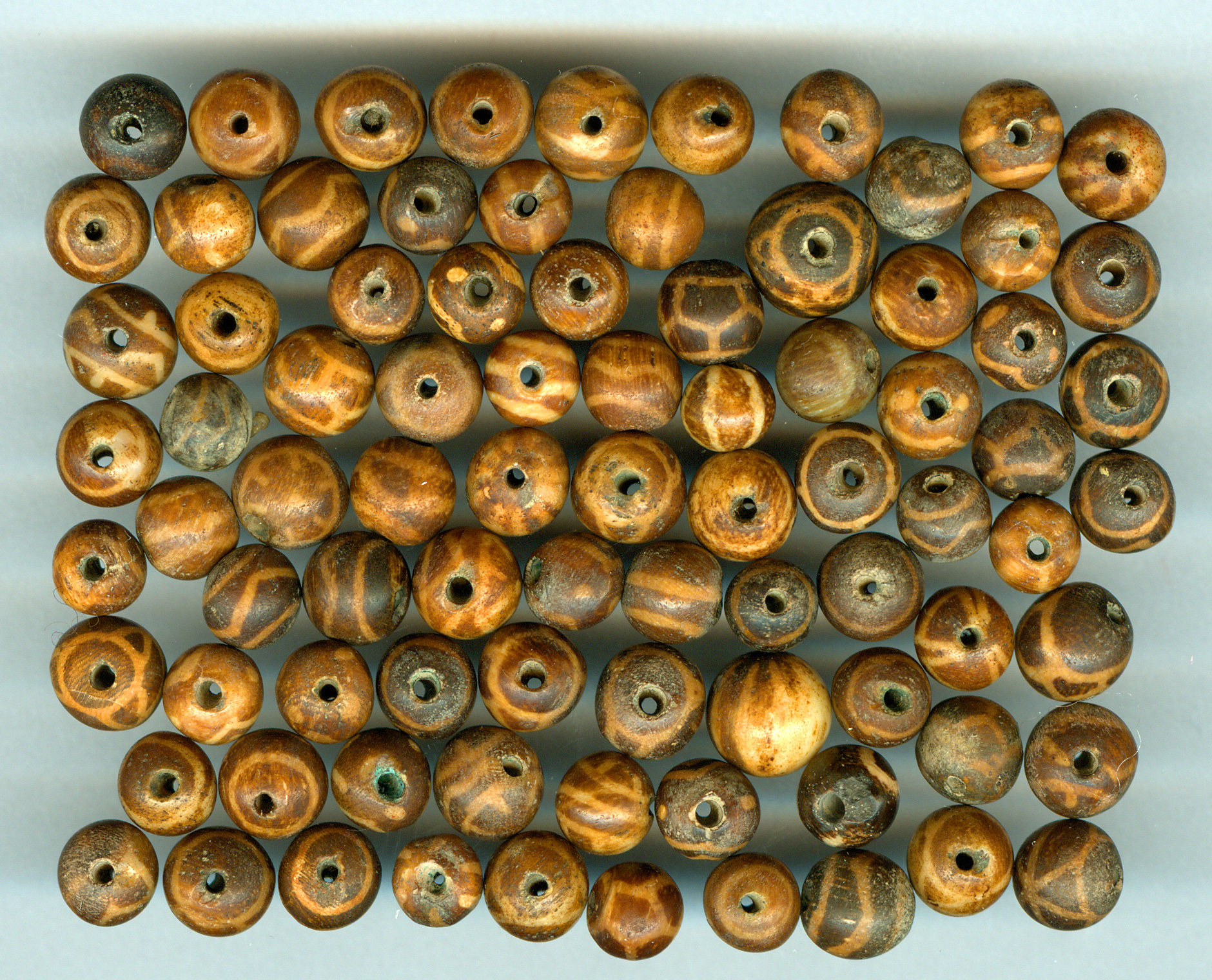
Brm 3
-
Small Chin Pumtek ball beads - 5,5 mm
|
The petite Pumtek beads featured here originate from the Chin State,
crafted with remarkable precision and intricate detail. The individual
who provided me with these artifacts specified that these are not
original Pyu beads. Instead, they are Chin replicas, estimated to have
been crafted approximately 500 years ago.
According to this source, the tradition of crafting these original
Pumtek beads from the Pyu city-states has been perpetuated within the
Chin community for the past millennium. The sustained production of
these beads over such a vast span of time illustrates the enduring
cultural significance and revered craftsmanship these pieces represent.
Even as "copies", these Chin-made beads embody the fusion of rich
heritage, timeless aesthetics, and the masterful technique of beadwork.
These beads, although not directly from the Pyu period, are steeped in
the same tradition and craftsmanship, and continue to be tangible ties
to a rich and complex history.
Elongated small Pyu beads
|
|
|
|
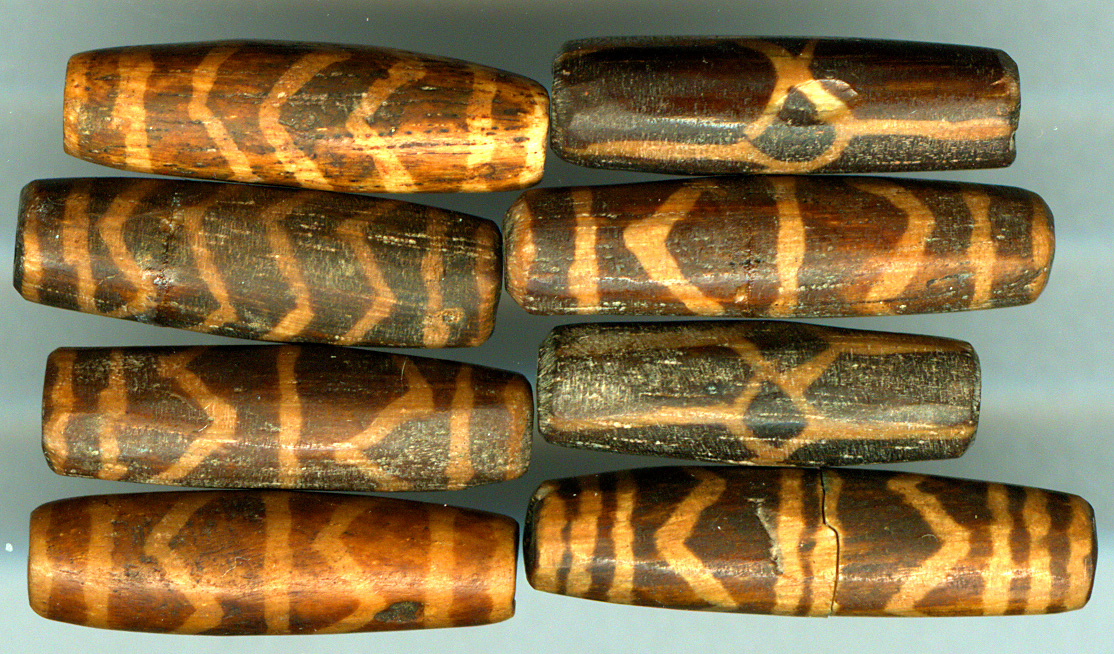
Brm 4
-
Largest 24 * 6 mm
|
Small rectangular Chin-Pumtek beads
|
|
|
|
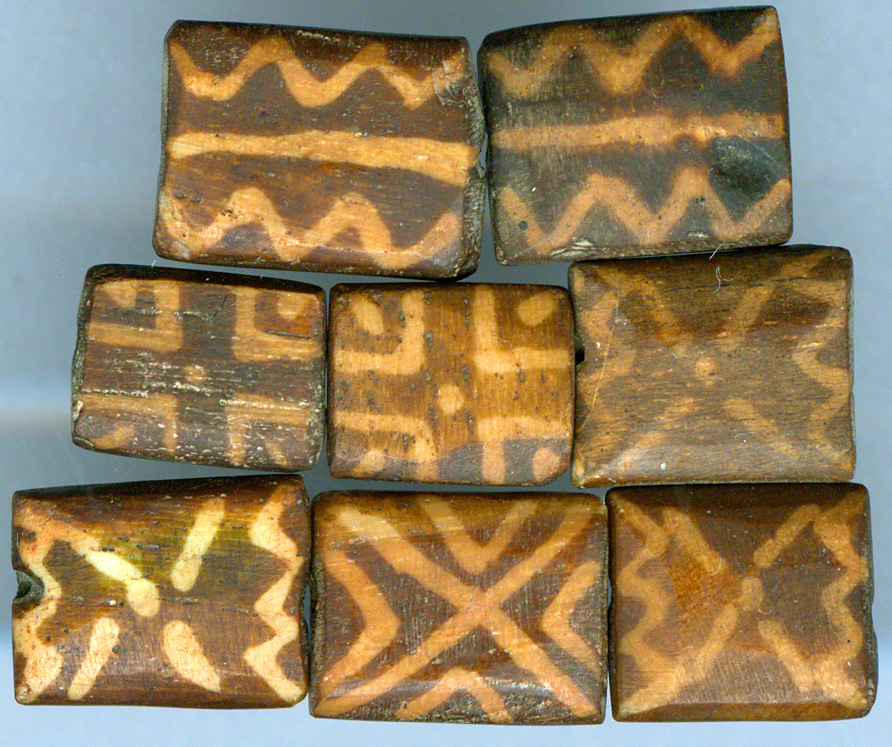
Brm 5
-
12 * 10 * 5 mm - average size
|
|
Wonderful ancient beads from Burma
|
|
|
|

Brm 6 - 47 * 9,5 mm
- Click on picture for larger image
|
|
|
Pyu repair-bead
This ancient Pyu bead has been 'repaired' by cutting off the ends of the bead. The repair itself seems to be quite old.
|
|
|
|
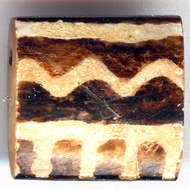
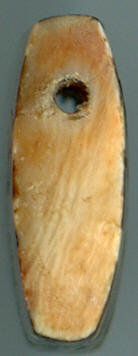
Brm 10 - 15 * 14 * 5 mm
-
SOLD
|
Large, rare & wonderful ceramic Pyu bow Bead
|
|
|
|

Brm 11
- 91 * 17 * 5,5 mm
Click on picture for larger image
|
|
|
|
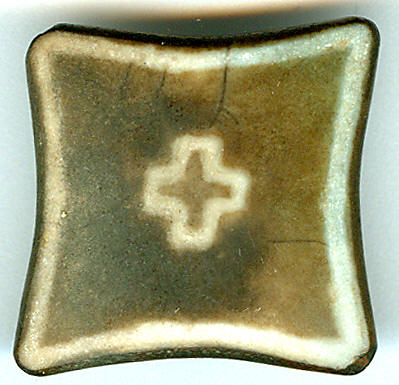
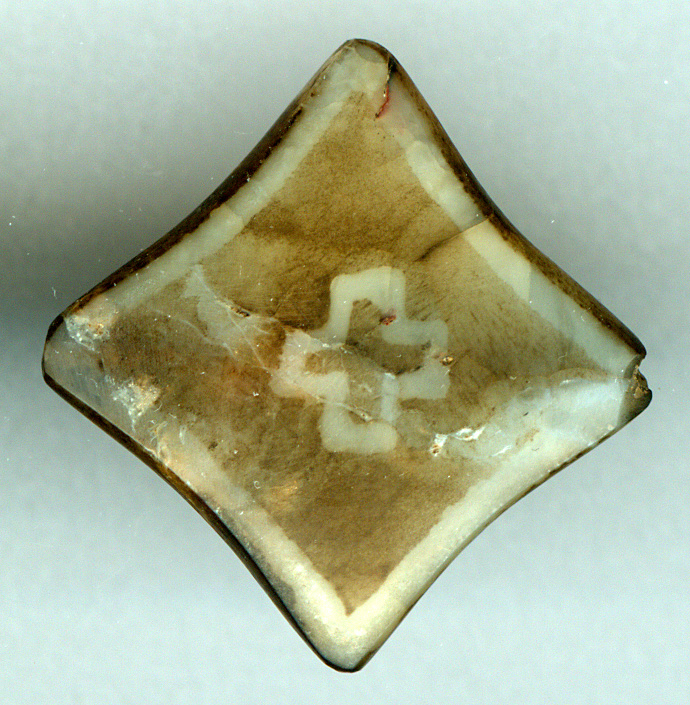
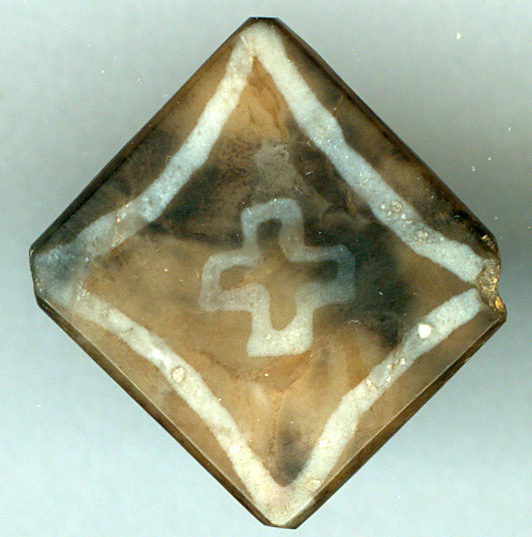
20 * 20 * 5 mm
30 * 30 * 5 mm 17 * 17 * 3 mm
Square ceramic beads with the typical Buddhist cruciform pattern.
Brm 12 Brm 13 Brm 14
|
Ancient Tibetan DZI?
The bead, steeped in intrigue and mystique, is
purported to be an extremely ancient form of Tibetan DZI
bead. When I presented it to a Tibetan expert dealer
specializing in DZI beads in Kathmandu, he believed
ibelowt to be a powerful talisman with the ability to
prevent stroke and brain hemorrhage. The bead's striking
feature is its multitude of 'eyes', a typical
characteristic of DZI beads believed to provide
protection and auspiciousness to its owner.
However, its age and authenticity have sparked some
debate. Several other experts I have consulted have cast
doubts about the bead's antiquity. Thus, while it
carries a certain appeal and folklore attached to it,
definitive conclusions about its age and origin remain
elusive.
|
|
|
|

Brm 15
- 61 * 12 mm
Click on picture for larger image
|
|
|
|
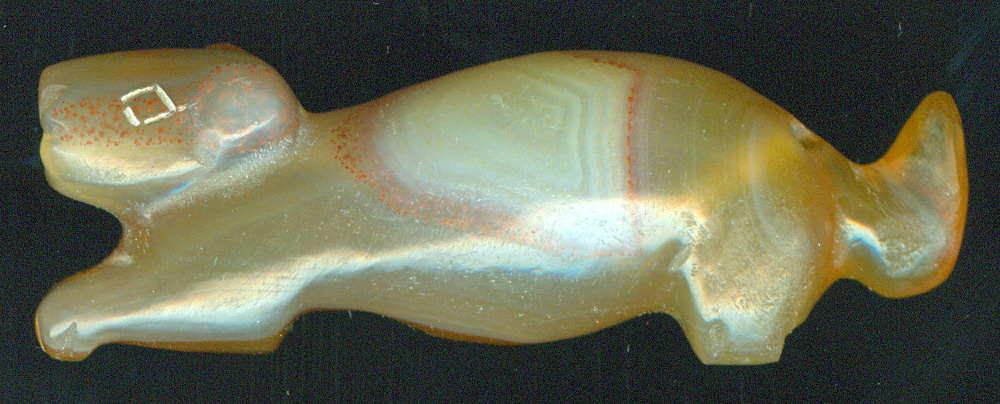 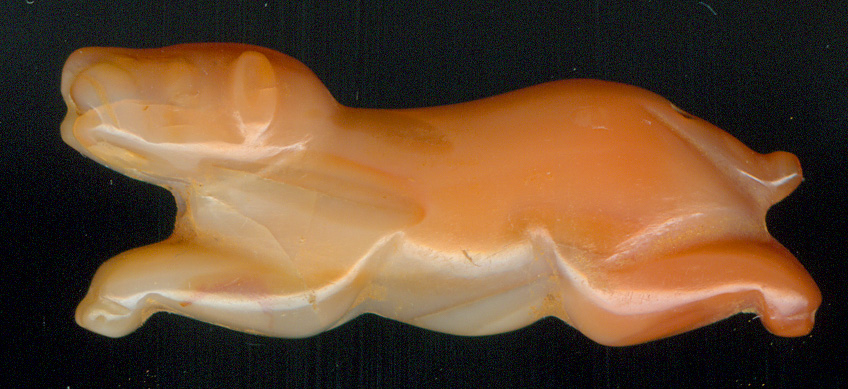 |
ELONGATED TRANSLUCENT CARNELIAN BEADS
|
|
|
|
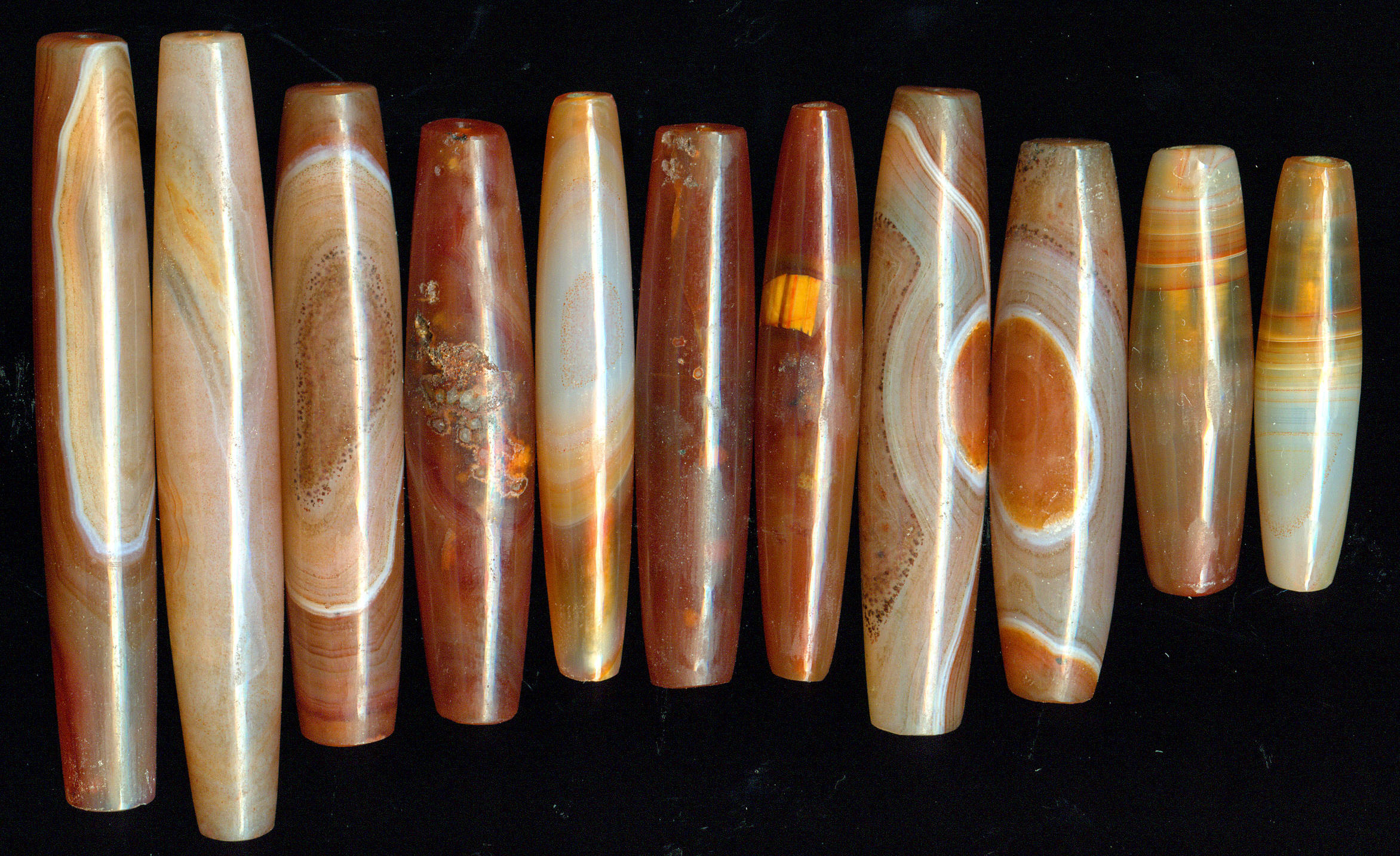
Brm 22 -
Largest bead 57 * 8,5 mm
NO 4. FROM THE RIGHT
IS
SOLD
|
|
|
|
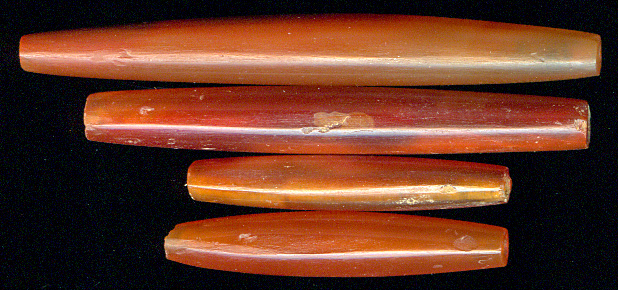
Brm 23 - Upper: 49 * 6 mm
|
|
|
|
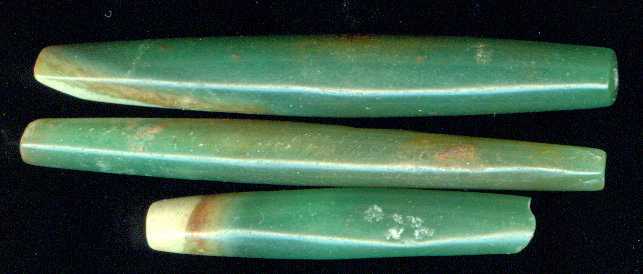
Brm
24
|
Bow beads - carnelian and agate
|
|
|
|
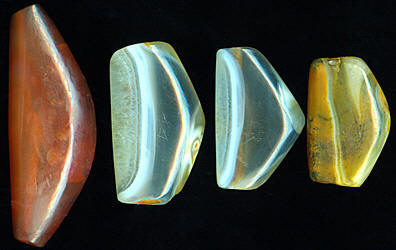
Brm 25
-
Click on picture for larger image
|
ETCHED BURMESE BEADS
In this
section, I showcase a selection from my collection of
Burmese etched beads, each bearing unique and distinct
characteristics. Notably, the collection features a
splendid large Jasper bead adorned with white stripes
arranged in 3, 5, and 3 formations. These white stripes
lend an intriguing visual depth to the bead, seemingly
not just etched, but carefully carved into its red
Jasper surface. This exquisite piece offers a stunning
testament to the artistry and attention to detail that
have been characteristic of Burmese bead craftsmanship
over centuries. Despite only featuring a few from my
collection here, each piece encapsulates the rich
cultural and historical heritage of bead-making in
Burma. |
|
|
Etched 12 striped carnelian bead with earth-oil patina |
|
|
|

EBB
75
- 63 * 10,5 mm -
Click on picture for larger image
|
Military Beads?
Displayed here is an ancient carnelian Pyu bead, its distinctive
coloration a result of exposure to oil, gas, and pressure. It's
intriguing to note that such beads are often identified as 'military
beads' on the internet, a label that seems rather incongruous
considering the Pyu culture's Buddhist pacifistic leanings.
Stripes on beads, particularly evident on carnelian ones, are a common
feature across Greater India. Rather than bearing a military
connotation, these stripes likely originated as imitations of natural
banded agate stripes, intended to convey animistic magical properties
within an animist context. However, it should be noted that this
specific bead, with its unique characteristics, is more typical of Burma
than of India.
Long & shorter
Truncated Convex Bicone beads
|
|
|
|
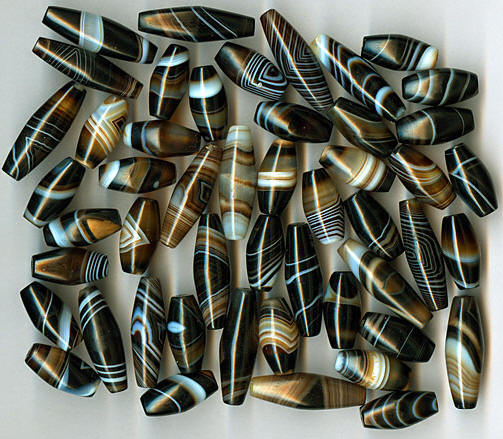
ClMatehtilay, Maline, Burma
| |
These exceptionally beautiful Sulemani beads
look like new beads.
I have not seen such colors, in a play of black
translucent stone and banding as one can observe in
these beads. They are all hand-polished and
oil cooked.
The shine of the many of the beads still have oily
reflection colors.
A close examination of the holes and the surface of the
beads shows that they have not been used. However, they
are ancient, displaying the most wonderful excavation
patina with a lovely soft sheen. They have been stored away as precious
jewels in
a long forgotten and destroyed burial site or they have been put in a
Buddhist
relic casket from and old Stupa.
You can read
more about excavation beads here. I marvel at this ancient skill of letting the artful patterns emerge out of the raw stone.
These beads are most probably a product of Burma's own craftsmen.
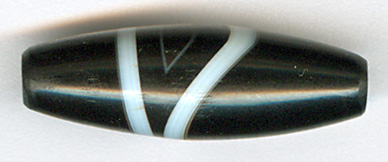
30 * 10 mm
Origin: Burma
I have singled this bead out of the lot because of its exceptional beauty.
|
|
|
In this assortment
of Buddhist Burmese beads, we find a broad spectrum of
patterns and colors. From black onyx adorned with white
stripes to more traditional translucent agate beads with
swirling motifs in various hues, the diversity is truly
remarkable. You can compare the black onyx bead SM 142
with SM 156, for instance.
The uniqueness of these beads is underscored by the fact
that similar examples can only be found on a site
featuring
beads from Bangladesh.
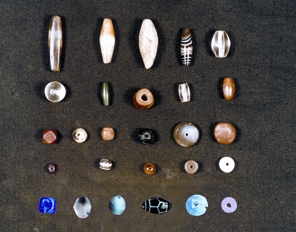
Ancient beads from
Mahastan, Bangladesh.
Note the apparent similarity to
bead no. 4 in the first row
Please note that the
images above most accurately depict the beads' colors in
natural daylight. In the series of images below, I've
endeavored to showcase the beads' translucent nature
through the use of a secondary light source.
|
|
|
|
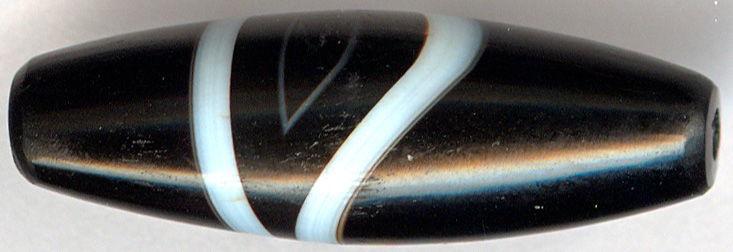
Brm -
SM 142 (2) - 30 * 10 mm
Click on pictures for larger image |
| |
|
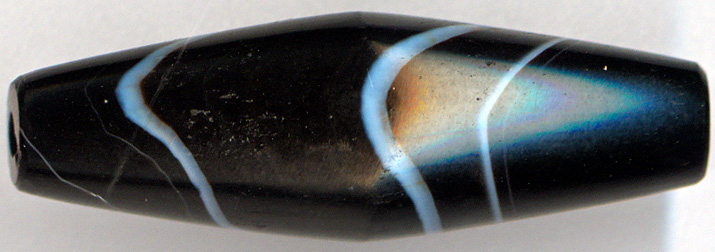
Brm -
SM 143 - 29 * 9,5 mm |
| |
|
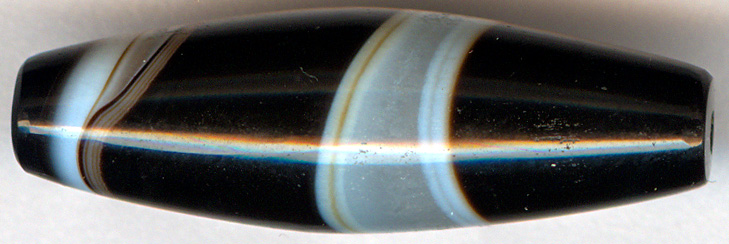
Brm -
SM 144 - 30 * 9,5 mm
- SOLD TO HERVE |
| |
|
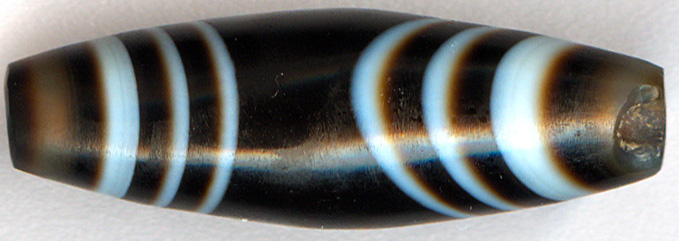
Brm -
SM 145 - 28 * 9,5 mm
- SOLD TO HERVE |
| |
|
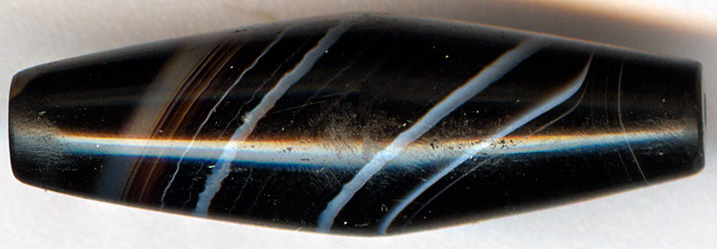
Brm -
SM 146 -
|
| |
|

Brm -
SM 147 - 29 * 9 mm
|
| |
|
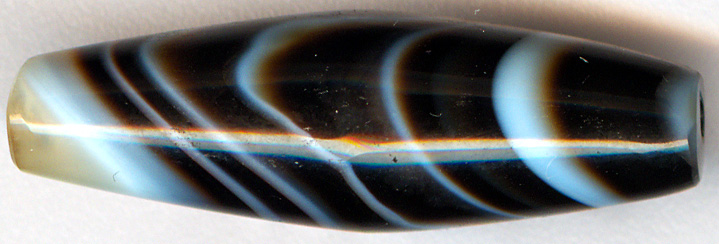
Brm -
SM 148 - 29 * 9,5 mm
|
| |
|
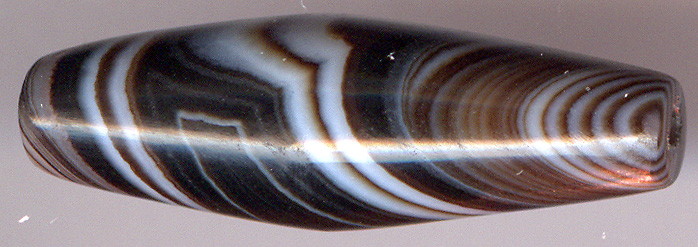
Brm -
SM 149 - 28 * 9 mm |
| |
|
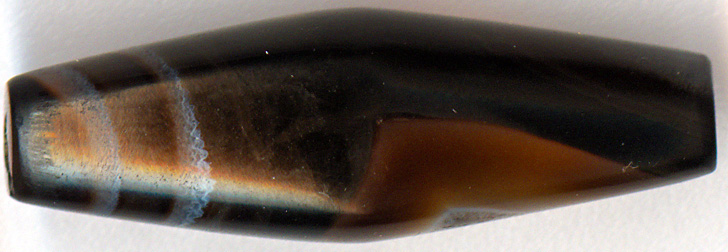
Brm -
SM 150 - 30 * 9,5 mm |
| |
|

Brm -
SM 151 - 29 * 9 mm
|
| |
|
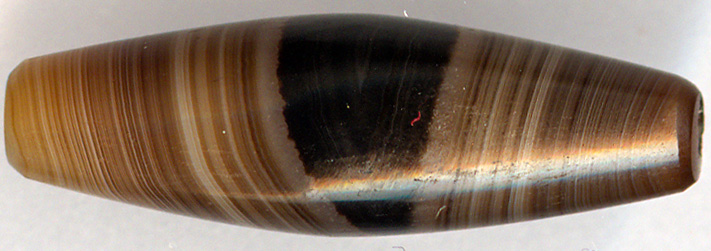
Brm -
SM 152 - 29 * 9 mm
|
| |
|
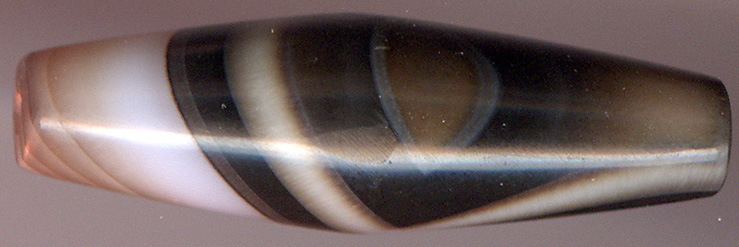
Brm -
SM 153 - 29,5 * 9,5 mm |
| |
|
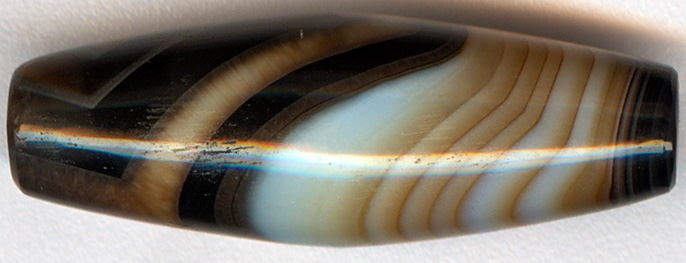
Brm -
SM 154 - 29 * 10 mm
|
| |
|
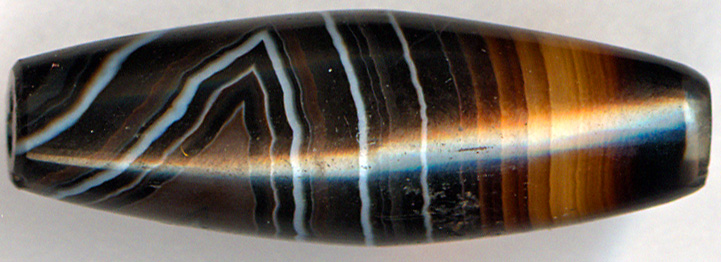
Brm -
SM 155 - 29,5 * 10 mm
- SOLD TO HERVE
|
| |
|
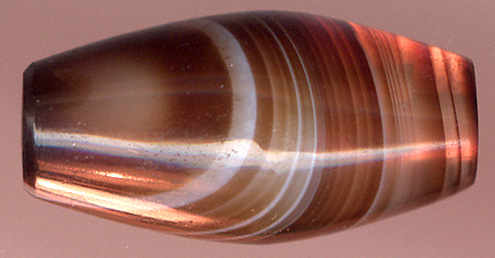
Brm -
SM 156 -
Click on pictures for larger image
|
| |
|
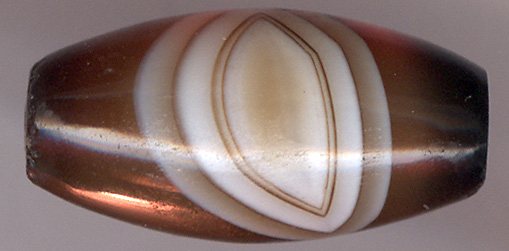
Brm -
SM 157 - 20 * 10 mm |
| |
|
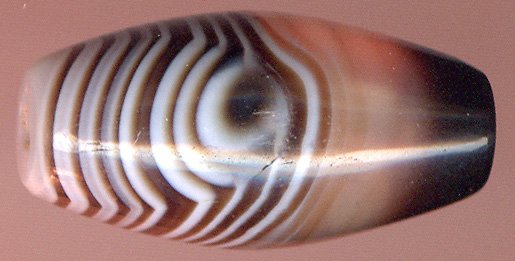
Brm -
SM 158 - 19,5 *10 mm |
| |
|
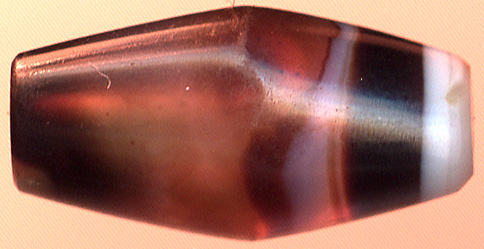
Brm -
SM 159 - 19 * 10 mm |
| |
|
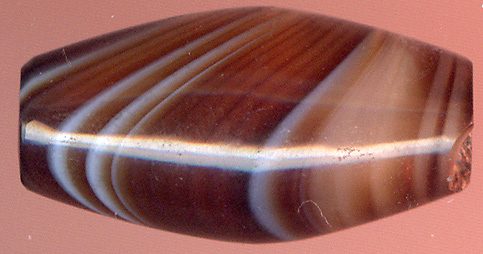
Brm -
SM 160 - 19,5 *10 mm |
| |
|
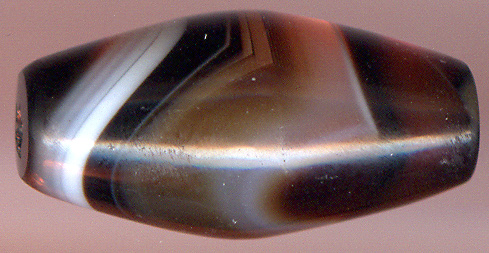
Brm -
SM 161 - 19,5 *10 mm |
| |
|
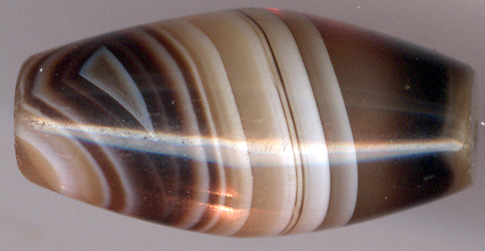
Brm -
SM 162 - 19,5 * 10 mm |
| |
|
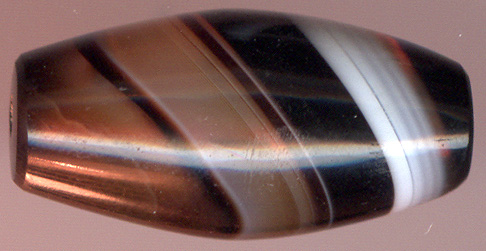
Brm -
SM 163 - 19,5 *10 mm |
| |
|
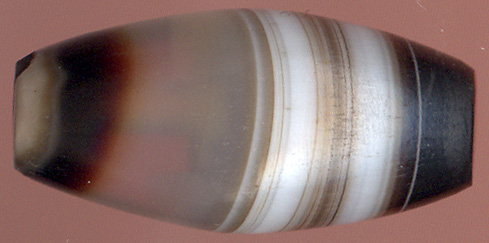
Brm -
SM 164 - 19,5 *10 mm |
| |
|
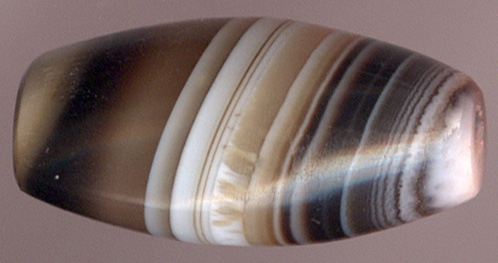
Brm -
SM 165 - 19,5 *10 mm |
| |
|
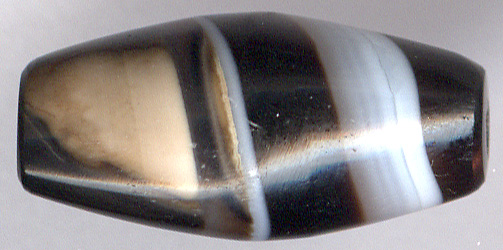
Brm -
SM 166 - 19,5 *10 mm |
| |
|
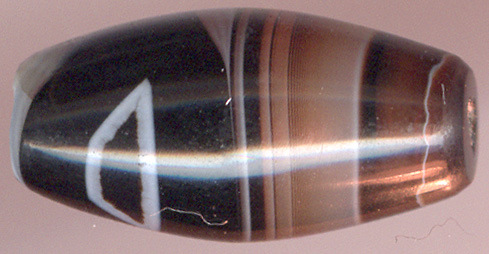
Brm -
SM 167 - 19,5 *10 mm |
| |
|
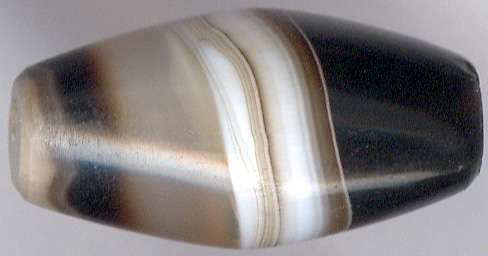
Brm -
SM 168 - 19,5 *10 mm |
| |
|
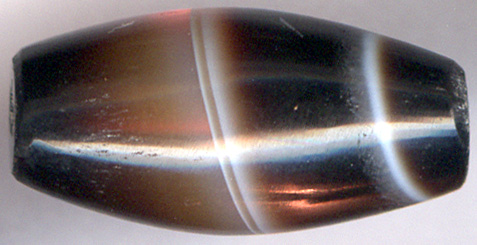
Brm -
SM 169 - 19,5 *10 mm |
| |
|
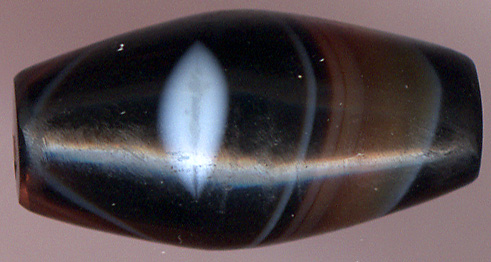
Brm -
SM 170 - 19,5 *10 mm |
| |
|
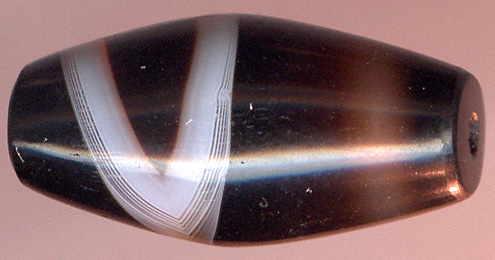
Brm -
SM 171 - 19,5 *10 mm |
| |
|
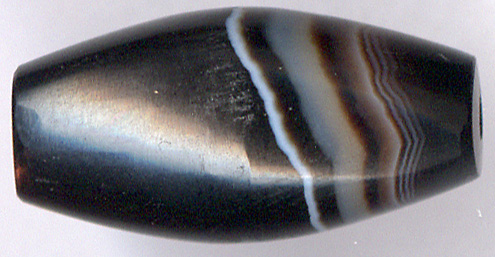
Brm -
SM 172 - 19,5 *10 mm |
| |
|
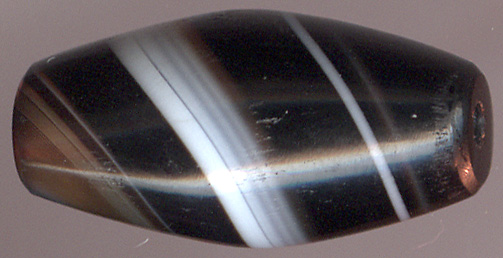
Brm -
SM 173 - 19,5 *10 mm |
| |
|
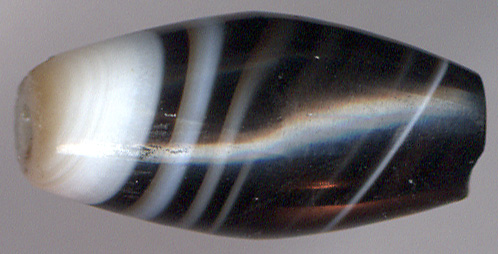
Brm -
SM 174 - 19,5 *10 mm |
| |
|
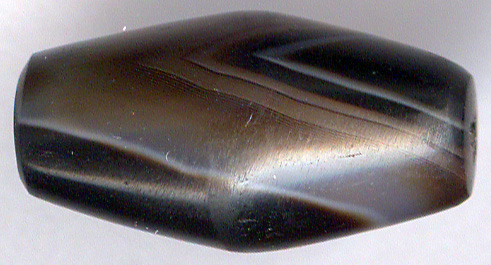
Brm -
SM 175 - 19,5 *10 mm |
| |
|
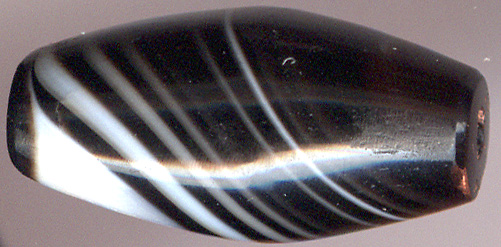
Brm -
SM 176 - 19,5 *10 mm |
| |
|
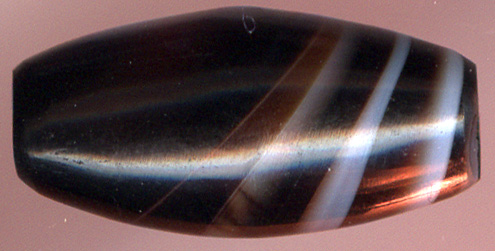
Brm -
SM 177 - 19,5 *10 mm |
| |
|
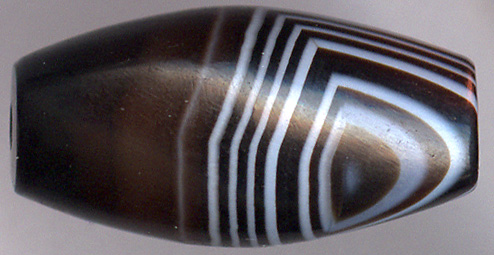
Brm -
SM 178 - 20 * 10 mm |
| |
|
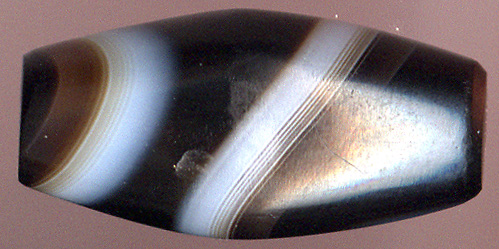
Brm -
SM 179 - 19,5 *10 mm |
| |
|
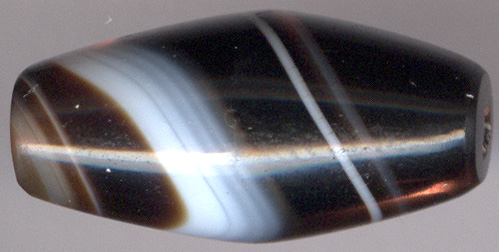
Brm -
SM 180 - 19,5 *10 mm |
| |
|
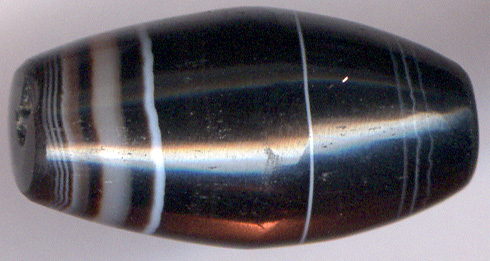
Brm -
SM 181 - 19,5 *10 mm |
| |
|
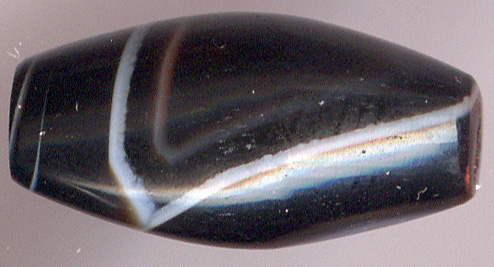
Brm -
SM 182 - 19,5 *10 mm |
| |
|

Brm -
SM 183 - 19,5 *10 mm |
| |
|
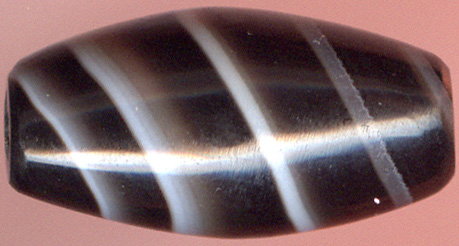
Brm -
SM 184 - 19,5 *10 mm |
|
Burmese Glass beads
|
|
|
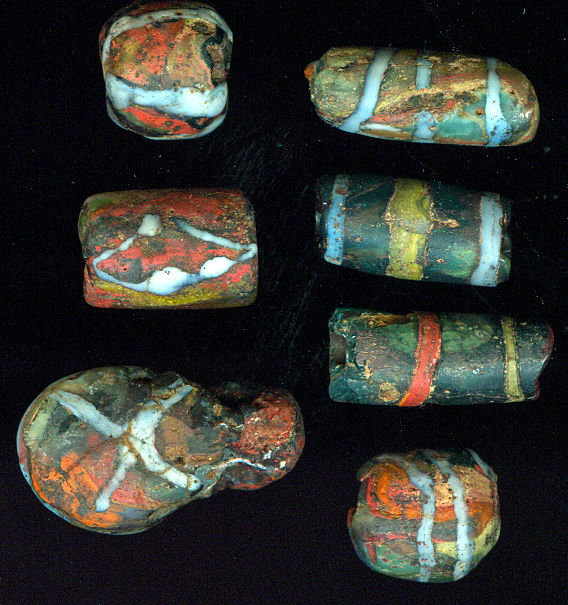
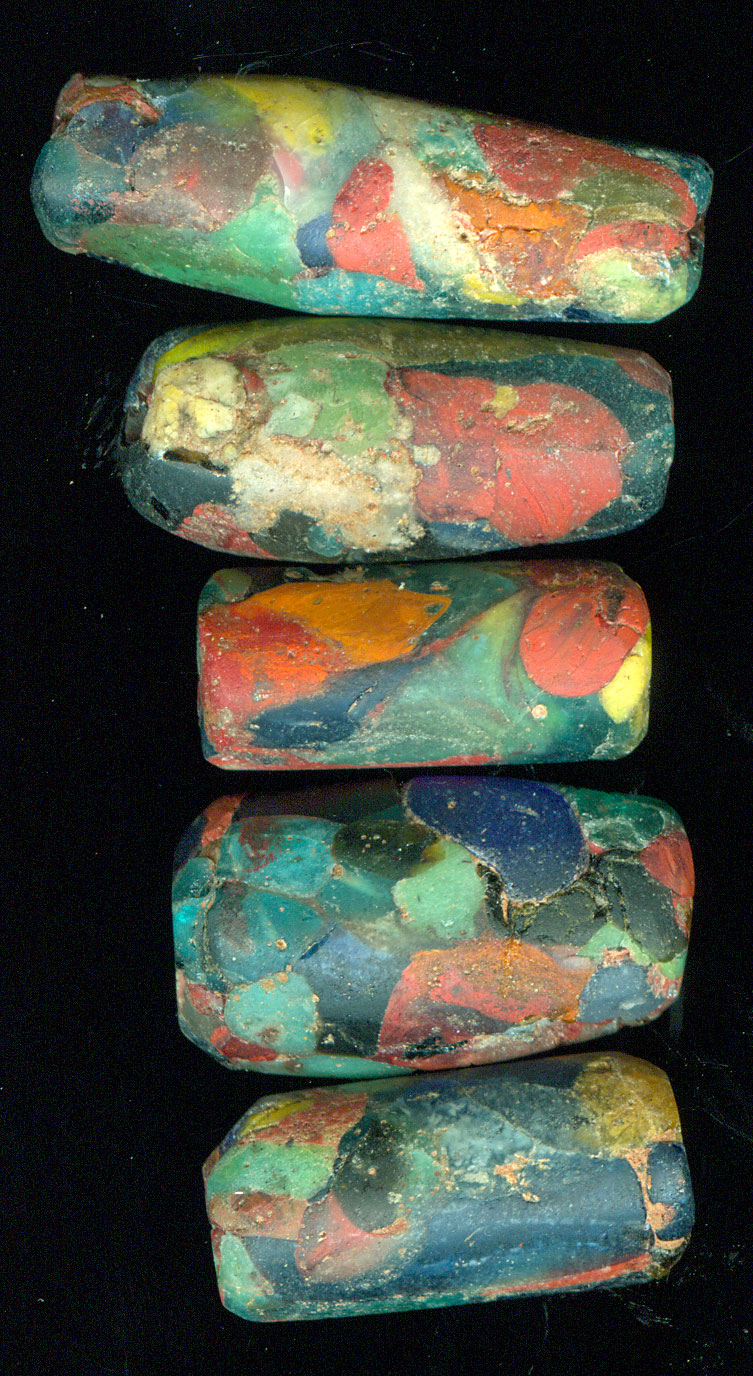
Down left: 24 * 14 * 7 mm
Brm - glass 1
Click on picture for larger image
|
|
These Pyu glass beads are made in resemblance of the typical Burmese jade.
|
|
|
|
Colourful glass beads
from the
Mon Dynasty
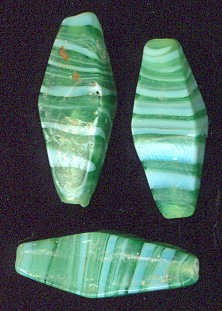
16 * 5,5 mm
Brm - glass 2
Click on picture for larger image
|
Burmese Nagaland glass beads
These wonderful blue glass beads are from the Burmese part of
Naga Land. They are around 100 years of age, made in India as copies of the much sought after Venetian glass pearls. These old Indian copies are not refined as the original Venetian pearls. However they have their own charm in their more 'primitive' design.
|
|
|
|
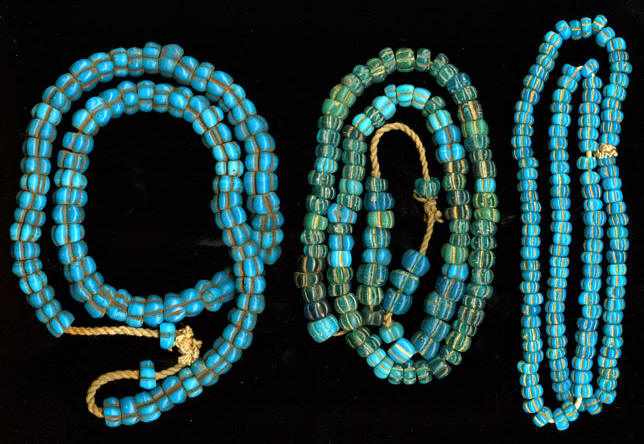
largest beads in upper chain: 13 * 9 mm
Click on picture for larger image
Brm - Glass 3
UNFORTUNATELY THESE BEADS ARE NOT GENUINE BUT COUNTERFEIT SPECIMEN
|
|
The Pyu City-States and the Indian Buddhist Influence
The most remarkable and aesthetically pleasing beads
from Burma predominantly originate from the
Pyu city-state culture. As evidenced throughout this
page, these artifacts represent a vast assortment of
bead types.
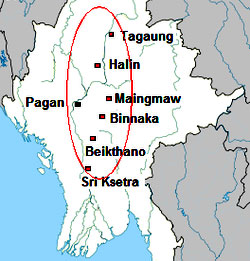
A Snapshot of Burma's Pyu City-States
The Pyu city-states, known
for their prosperity and peace, had an impressively long
lifespan. They began around 200 B.C. and gradually
declined around 1050 A.D. Visitors from contemporary
China characterized the Pyu city-states as both affluent
and tranquil. Chinese chronicles observed that young Pyu
monks chose to wear cotton silk rather than genuine
silk, thereby sparing the lives of silk worms.
The Indian Influence on Pyu's Culture
Although the Pyu people descended from a Tibeto-Burmese
tribe originating from the Yunnan province, they quickly
fell under the extensive influence of India.
Indian Ashokan Buddhism, followed by Gupta influences,
permeated every level of Pyu society, facilitated by
far-reaching trade relations. This influence was
particularly apparent in the southern Pyu areas where
the most significant maritime trade with India was
conducted. Here, the process of 'Indianization' was
highlighted by southern kings of Sri Ksetra adopting
Indian titles like Varmans and Varma.
Both the southern and northern Pyu states were
influenced by India. Some northern Pyu Kings (Tagaung)
even asserted their lineage from the Sakya clan of the
Buddha.
Buddhist India: A Super Power
With a population not exceeding a few hundred
thousand people at their peak, the Pyu city-states were
small in size. Such a limited population lacks the
critical mass necessary to create a fully independent
society.
Contrastingly, ancient India was a vast empire, hosting
one of the world's largest populations. With King
Ashoka's conversion to Buddhism, India became the ruler
of the world's most substantial economic power.
Evidence of the deep Ashokan Indianization can be found
at numerous Pyu sites, which have unveiled a wide
variety of Indian scripts. These range from King Asoka’s
edicts written in north Indian Brahmi and Tamil Brahmi,
dated to the 3rd and 2nd centuries BC, to the Gupta
script and Kannada script, dated to the 4th to 6th
centuries AD.
The countless stupas and pagodas in Bagan, encapsulating
a purely Indian Buddhist architectural style, likely owe
their construction to Indian engineers and architects.
Ruled by independent kings, the Pyu settlements
established courts heavily influenced by the Indian
monarchy, particularly the southeast region of India.
Kings and Monks
Under the
influence of Ashokan Buddhism, Kings were not considered
inherently divine. Instead, their legitimacy was
sanctioned through a symbolic 'baptism' by Buddhist
institutions. The people of Pyu, and later the Burmans,
adhered to the original state Buddhism of the Ashokan
empire. This created a symbiosis between monasteries and
the state, whereby Kings could not exist without being
divinely ordained by the Theravada institutions.
From the inception of the Pyu culture to the English
conquest of Mandalay in 1885, Buddhist monks played a
crucial role in sanctifying Burmese kings. Monks
performed the necessary rituals to validate the
monarch's divine right to rule. In return, royal
families provided financial support to the Sangha (the
monastic community). This system, which slowly faded in
India with the rise of the Sunghas, continued in Burma
until the English extinguished the royal classes during
the last Anglo-Burmese war in 1885.
Animist Buddhism
By the 4th century, the Pyu had largely embraced
Buddhism. However, akin to contemporary Burma, the
practice of Buddhism often layered over a deep-rooted
animistic core. This blend of beliefs is akin to the
creation of Burmese lacquer art - beneath many layers of
lacquer, the innermost core is made of animal horse
hairs. In essence, the Burmese culture remains
fundamentally animistic. The interpretation of Burmese
Buddhism should be viewed within this animistic context.
This also applies to the bead culture and the associated
magical beliefs attached to beads, which reflect the
spectrum between
Animism and Buddhism.
The Ascendancy of the
Burman Culture
Around 800 AD, the Burman culture began to slowly
replace the Pyu culture, initiating from Bagan. A
recurring theme in history is the tendency of the
victors to adopt the culture of the defeated, and the
Burmans were no exception. A poignant illustration of
this is seen in the actions of the new Burman ruler who
assumed an entirely Indian name, King Anawrahta. In
1044, when he declared his conversion from Ari-Buddhism
to Theravada Buddhism, he commissioned the building of
the Schwezigon Pagoda. Interestingly, this pagoda was
constructed in the distinctive architectural style of
the Pyu.
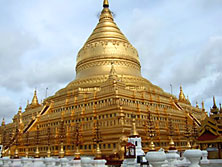
Schwezigon Pagoda, Bagan, 1044
Buddhists and Hindus:
Co-existing Cultures
The civilizations of the Pyu and later the Burmans were
predominantly Buddhist, however, they had a significant
and respected Hindu minority, mirroring the religious
diversity of India. Regrettably, much evidence of a
prosperous Hindu culture in Burma was systematically
destroyed following the military coup in 1962. For
instance, in Bagan, several hundred ancient Pyu
Shiva-lingas were demolished as part of the
military's efforts to eradicate all Hindu cultural
influence in Burma. Simultaneously, millions of Indians
who had settled in Burma during the British colonial
period were expelled from the country by the new
military dictatorship.
The
Evolution of Bead History
The trajectory of bead production mirrored the
political shifts in power, as the production techniques
and styles were appropriated by the ascendant Burman
rulers. Consequently, distinguishing between an
authentic Pyu bead and a bead crafted by the subsequent
Burman artisans of Bagan can sometimes be challenging. I
had the privilege of interacting with a group of Burmese
individuals whose livelihoods depend on bead hunting.
From my experience, they are the most adept bead experts
I've encountered throughout my time as a bead collector.
They maintain that they can easily differentiate between
a Pyu bead and a later Bagan-Burman bead, attributing
the decline in the quality of bead making to the period
following the Pyu civilization's decline.
Certainly, Pyu beads possess a distinct identity and
artistic allure. However, it's critical to remember that
these beads, along with their designs, served as vessels
of cultural and religious symbolism, largely influenced
by the Buddhist epicenter, India.
In examining the design and symbolic significance of Pyu
and subsequent Burmese beads, it's essential to consider
their well-documented connections to and dependencies on
Indian trade. Furthermore, it's important to remember
that during the Pyu era, India was a predominantly
Buddhist country. Thus, all beads from this period, and
even those created later, should be interpreted in the
context of the syncretic blend of Animistic and Buddhist
traditions in Indian culture.
Presently, Pyu bead culture is often misinterpreted as
an isolated phenomenon, akin to the erroneous perception
of Gandhara art as a cultural artifact exclusive to
Afghanistan. However, Gandharan art wasn't merely a
local artistic expression; it was an integral part of
the flourishing State Buddhism of Greater India.
Below, I've displayed a selection of etched beads that I
procured in Bagan. These beads share an identical design
with the ones I discovered in Northwest India and
Pakistan. As it often happens, beads can be seen as
voyagers — on one hand, they lose their historical
context through travel; on the other hand, they actively
contribute to the creation of history through their
journey.
Beads from Bagan, Burma
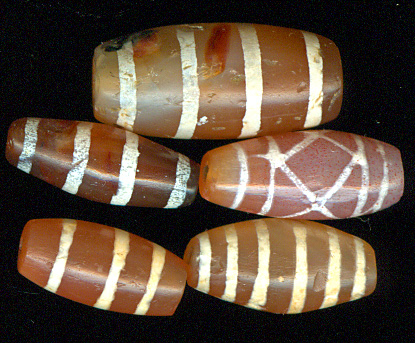
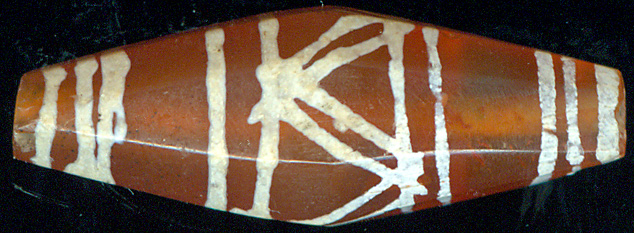
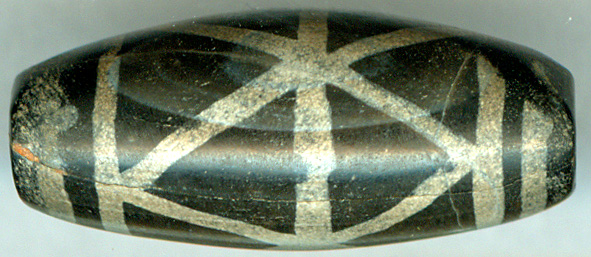
Beads from Northwest India

Assessing the
Age of Pumtek Beads
In the West, Pumtek beads are often classified as Pyu
beads. However, during my visits to Burma, I found that
local diggers, collectors, and bead sellers do not
acknowledge this classification. Many were not even
familiar with the term 'Pumtek', referring to these
beads simply as 'Chin beads', indicating their origin
from the Chin province in Northwestern Myanmar. This,
combined with my historical investigations, led me to
formulate the following hypothesis:
At the onset of the Pyu culture, there was no distinct
or remarkable bead culture in Burma. Similar to the
architectural styles of the pagodas, the lives of the
Kings, and so forth, the prevailing cultural elements
were largely modeled after those of their Indian
Buddhist neighbor. Consequently, the earliest beads
discovered in Burma exhibited purely Indian designs,
either produced in India or by Indian-influenced
artisans residing in Burma. It was only later that the
various tribes of Burma began to cultivate their own
styles and techniques of bead making.
This evolution mirrored the progression observed in the
development of stupas and pagodas in Burma. Initially,
structures at Bagan were purely derivative of Indian
architecture. However, as the Burman culture expanded
and exerted influence over neighboring tribes and
regions, Burma started to develop its own distinct style
of stupa and pagoda architecture.

Bagan-Indian cloned stupa style
One of the primary
characteristics of Pumtek beads is that they are made
from petrified or agatized wood, a material not found in
India but abundant in Burma. Therefore, Pumtek or 'Chin'
beads could be seen as representing a later, more
'localized', and independent progression in Burmese bead
making. Interestingly, this development did not occur
within the historical centers of power in Burma, but
rather at the periphery of the country.
At present, I do not possess sufficient evidence to
confirm this hypothesis; it remains a working model.
However, if considered from this perspective, Pumtek or
'Chin' beads may not be as ancient as previously
thought, potentially not exceeding a maximum age of 1000
years.
The Significance of the
Buddhist Cruciform
One of the most prevalent symbols observed on Pyu
beads is the cruciform.
While the Pyu civilization
had a particular fondness for this symbol, it did not
originate from their culture but came as a messenger of
Buddhism from India.
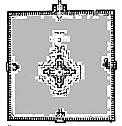
Cruciform stupa structure
of Somapura, Greater India
The cruciform held
significant importance in early Buddhism and was
integrated into the architecture of most stupas and
pagodas. To explore this connection, I presented several
well-learned Buddhist monks in Myanmar with cruciform
beads, such as the one displayed below, and asked them
about their initial impressions of this symbol.
Interestingly, even though most of these monks had never
seen these cruciform beads before, their responses
aligned with my expectations.
"This symbol depicts the Four Noble Truths of the
Buddha..."
"This symbol signifies the mission of the Buddha, akin
to what is portrayed in the Ashoka pillar..."
Buddhist Cruciform Jasper Bead
|
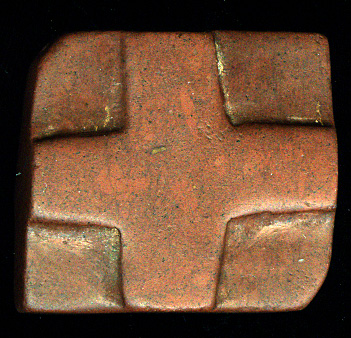 |
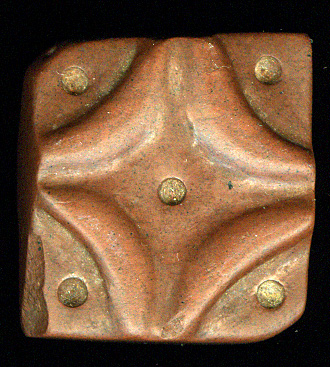 |
|
26 * 24 * 9 mm
Click on picture for larger image
|
Again, the
profound influence from Indian Buddhism is evident. This
pre-Christian cross was the emblem of the renowned
Buddhist University at Taxila in Northwest 'Greater
India'.
Below you can see a bead from Taxila in Pakistan.
Below, you can see a bead
from Taxila in Pakistan. I firmly believe that the
patterns depicted on etched beads represent a simple
sign language rooted in Buddhist culture. These
straightforward signs, like the uncomplicated mudras of
the Buddha, served to unify various Buddhist societies
scattered along the vast expanse of the trade routes.
These diverse Buddhist cultures had different customs
and languages, but they found common ground in
understanding the humanistic messages of the Buddha.
These messages promoting tolerance and human
understanding were essential for the maintenance of the
trade routes. You can read more about this subject [here].
|
|
|
|
|
|
|
|
|